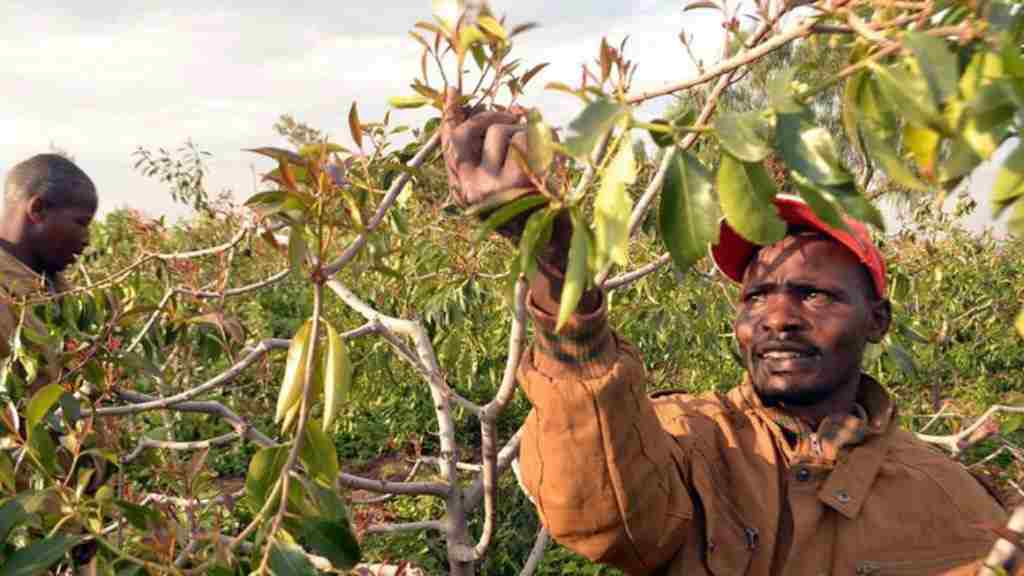Kenya’s agricultural sector is well known for its exports of tea, coffee, and horticultural crops such as flowers, but the khat plant farming is not as widely recognized outside of East Africa – the khat plant, also known as miraa. Khat farming in Kenya is not just a crucial source of income for many families in the Meru region, but it is also a vital cultural tradition that has been passed down for generations. In this article, we explore the significance of the khat plant to the Kenyan economy and culture, the farming process, and the challenges facing the industry.
What is Khat?
The khat plant (Catha edulis) is a shrub that grows in the highlands of East Africa and the Arabian Peninsula. The plant contains cathinone, a stimulant that has effects similar to amphetamines. The leaves of the khat plant are chewed to release cathinone, which produces feelings of euphoria, increased energy, and alertness. Khat is legal in many countries in East Africa and the Middle East and is widely used as a recreational drug and a social activity.
Khat Farming in Kenya
Khat farming in Kenya primarily takes place in the Meru region, located in the eastern part of the country. Small and family-owned farms, with an average size of about half an acre, are often located on steep hillsides, which require a great deal of manual labor to maintain. The soil in this region is rich in nutrients, making it ideal for growing the khat plant.
The Khat Farming Process
Khat farming in Kenya is a labor-intensive process. The khat plants are propagated from cuttings, and they take about three years to reach maturity. During that time, the khat plants must be watered and fertilized regularly, and the leaves must be pruned to promote growth. Once mature, the khat plants are harvested every three to four days, and the leaves are then transported to local markets or exported to other countries in East Africa and the Middle East.
Khat as a Source of Income and Cultural Tradition
Khat farming is not just an important source of income for many families in the Meru region, but it is also a vital cultural tradition that has been passed down for generations. The khat plant is deeply ingrained in the cultural identity of the Meru people, who consider it a symbol of hospitality and generosity. The Meru people often chew khat as a social activity, using it as a way to build community and connect with others.
Challenges Facing Khat Farming
However, khat farming faces many challenges, such as competition from cheaper imports from neighboring countries and the perishable nature of the khat plant. Proper storage facilities and transportation infrastructure are lacking in the region, which can lead to significant losses for farmers. In addition, there have been efforts to ban khat use in some countries, such as the UK, which has negatively impacted the industry.
The Controversy Surrounding Khat Use
The khat plant is also controversial, and its use has been linked to health problems and social issues. Studies suggest that long-term use of the khat plant can lead to mental health problems and addiction. There are also concerns about the impact of khat plant use on productivity and social relationships, as many users spend hours chewing the leaves instead of working or engaging in other activities.
Preserving the Cultural Significance of Khat Farming
Despite these challenges, khat plant farming remains an essential part of the economy and culture of the Meru region. Efforts are being made to address some of the challenges facing khat farming, such as improving transportation infrastructure and developing new markets for the plant. In addition, some farmers are experimenting with new varieties of khat that are more resistant to disease and have a longer shelf life, which could help to increase profitability.
However, there are also concerns about the impact of changing attitudes towards khat use on the cultural significance of the plant. The Kenyan government has taken steps to regulate the industry and promote sustainable farming practices, but there are fears that the increasing stigma attached to khat use could lead to a decline in the industry and the loss of an important cultural tradition.
Khat farming in Kenya is not just a source of income but an important cultural tradition that has been passed down for generations. The khat plant is deeply ingrained in the cultural identity of the Meru people, who consider it a symbol of hospitality and generosity. While the industry faces many challenges, there are efforts to address them and preserve the cultural significance of khat farming. As the global debate around the use of khat continues, it is important to recognize the role that khat farming plays in the lives of many Kenyan families and communities.




